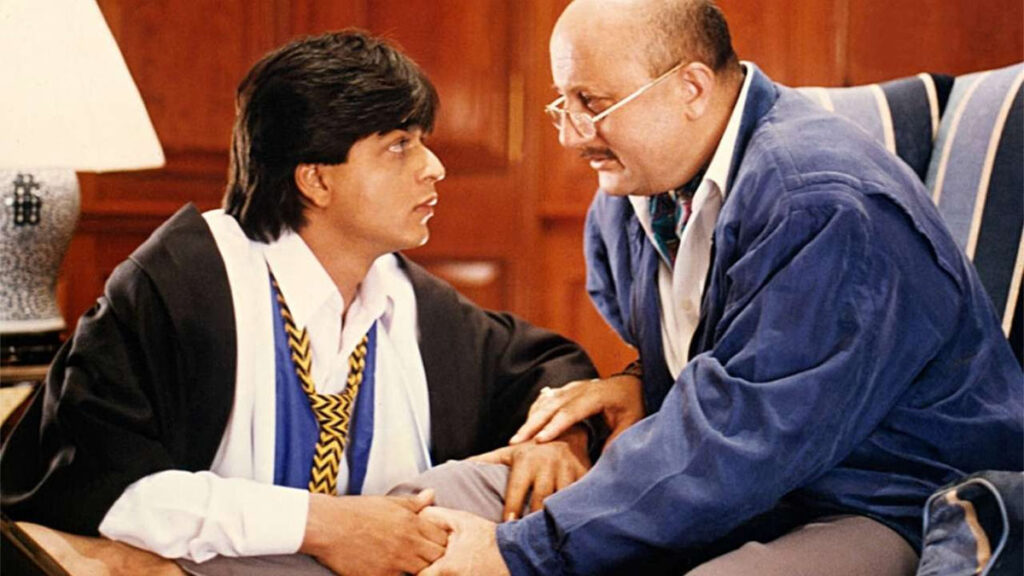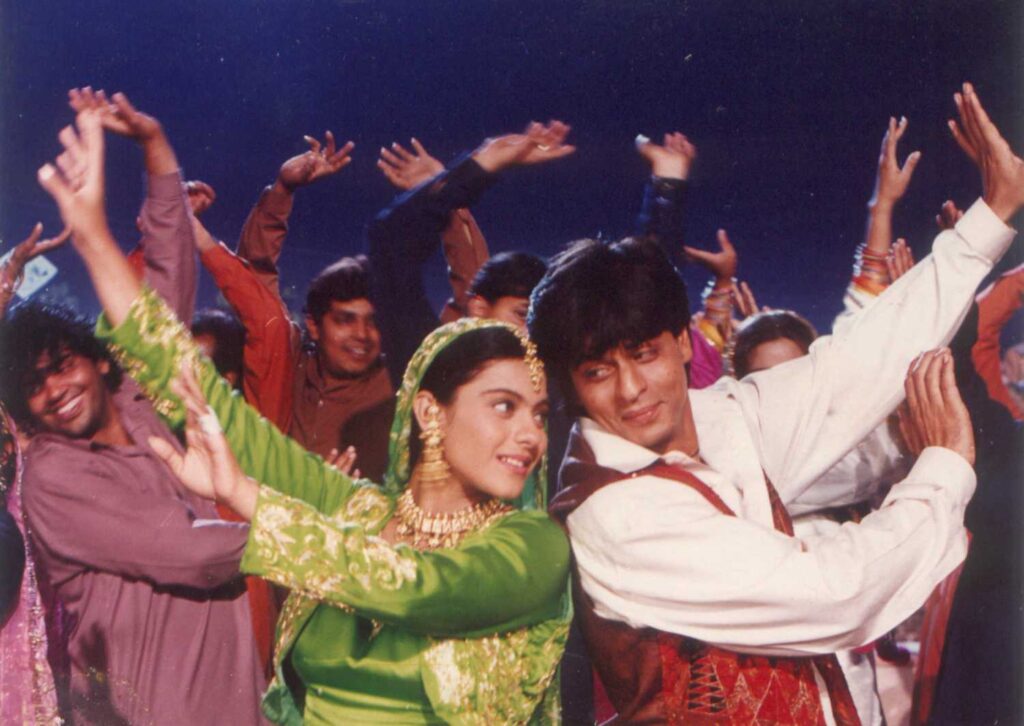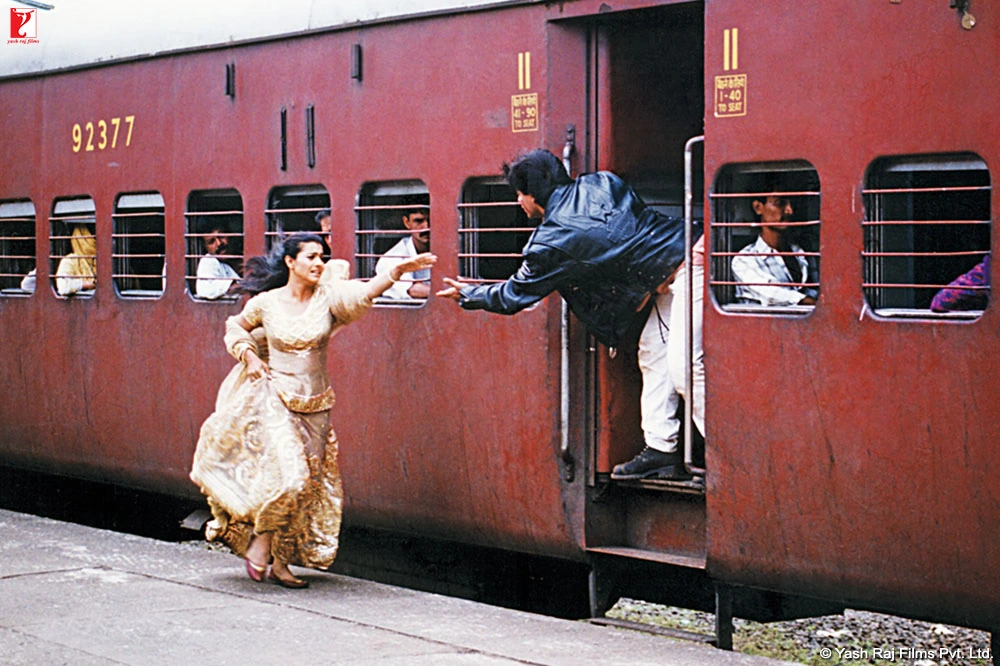I think my watching of Dilwale Dulhania Le Jayenge now in 2023 should be a markedly shifted one, because while I don’t remember having seen the entirety of the 189 minute epic musical.
I have seen its derivatives, it’s countless inspirations, it’s begotten and completely irrational stepchildren in the form of the daily soaps which are still churned out utilising at least one or two of the ten or twenty tropes DDLJ introduced as well as perfected.
Its also fascinating to see how with the opening of the economy and the import-export gaining entryway into the nation by the abolishment of the license Raj, the movie was designed to cater to city kids with exposure of dozen tv channels instead of the two Doordarshans, while rural kids too had to be satisfied.
Its an engineering of storytelling, the screenplay of DDLJ, a form of compromise while simultaneously subverting.
Progressive outlook but still praising conservatism.

A film in which the Non Resident Indians (NRIs) had far more values of “Indian Culture” than previously shown in the last of the Bollywood movies of the decade of the 80’s with the Roberts and their chomping cigars and their Monicas.
All of these observations are hindsight, caused due to a result of pop culture osmosis. It doesn’t change the fact that the movie’s flaws are fatalistic and glaring, its high leaning into conservatism with Raj actually “earning” Simran instead of “stealing” her away doesn’t really account for the latter’s own freedom or her liberty to make her own choices. Also doesn’t change the fact that Raj’s “courting” of Simran will be looked at in a wildly different fashion.
But, with all of that said, why is it so popular? Why are some single screen theatres in Mumbai still running DDLJ?
Maybe because at the core of it, the movie’s efficiency of direction and the filmmaking truly stand out. Even in his debut film, filmmaker Aditya Chopra truly shows a knack of shooting splendour and colour, be it the corn fields of Punjab, be it the lush green meadows of Bern, or be it capturing the leads with all of their beauty and charm.

I have seen Kajol in countless other movies, but something about DDLJ struck me this time. She is gorgeous, at times independent, not as obnoxious as her character in Baazigar.
Shah Rukh Khan’s Raj on the other hand does need time getting used to. However, in spite of the screenplay’s myriad of issues, this is SRK’s Citizen Kane as a romantic lead.
He would always be chasing this combination of charm, vulnerability and an irascible cheekiness, and while he would come pretty close, it never truly gets replicated.
DDLJ is a time capsule, but what makes it timeless are the songs and the moments. Jatin-Lalit’s album is a true symphony of melodies while the key moments.

Bade bade shehron mein choti choti baate hoti rehti hai senorita or Palat or Ja Simran, jeele apni zindagi with her running towards the train trying to catch Raj’s outstretched hands are so profoundly ingrained into every Indian film watcher, that my opening statement still stands.
Even if you haven’t seen DDLJ, you have seen DDLJ.